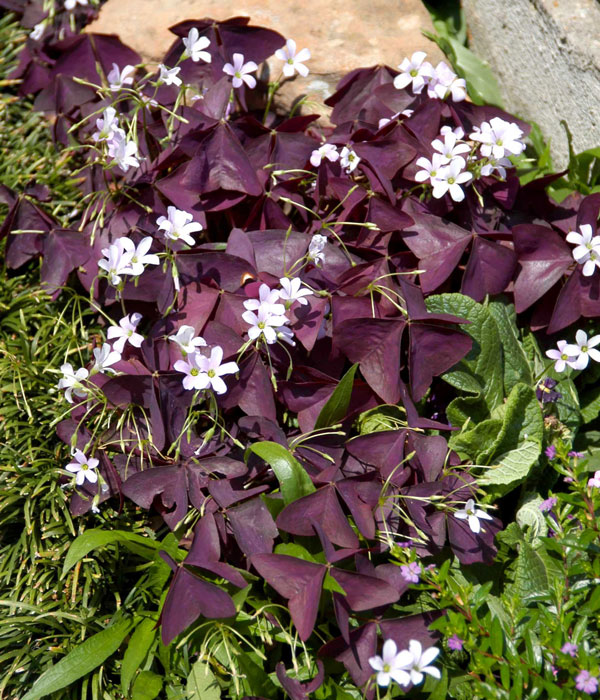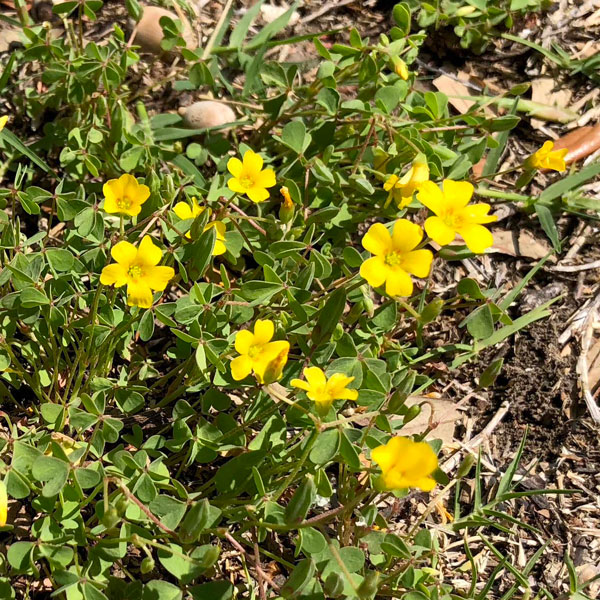Oxalis brings back fond memories
I started my career in horticulture mowing yards in College Station about the time Bear Bryant left A&M for the University of Alabama. (Side note: his son and I were in the same grade and played Little League baseball together.)
As I was mowing, I was always looking at landscaping, and this cheerful little perennial caught my eye every spring. And it still does.

Those years were back in the late 1950s into the early ‘60s, and you almost never saw perennials sold in garden centers. And, if you did, it certainly wasn’t anything as small and insignificant as this little oxalis. It was going to be some big flamboyant canna or elephant ear.
But it was plants like this that caught my eye as I mowed those big yards on the east side of the TAMU campus. Those college profs (like my dad) loved their gardens, and they shared plants all the time. This was one that got dug up and handed around. A pass-along plant of the purest sense.
It’s only been in the past 30 or 35 years that you could count on finding pink oxalis in garden centers in spring – and an almost identical white counterpart as well. I’ve had both in my landscape for decades and they behave the same. They grow vigorously in the spring, bloom profusely about now, then go mostly dormant when it gets hot. When weather cools and gets moist again in the fall they respond with a second season of blooms.
They need moist, highly organic planting soil, and they really need shade. In my mind’s eye, I think of them growing with my ferns, ajuga, hostas, hellebores, and other shade lovers. They make a nice package. And they’re all completely winter hardy, at least in Zones 6-10.
More recently, enter a newcomer. It’s Oxalis triangularis ‘Atropurpurea,’ and it’s slightly bigger and bolder. We first saw it as a potted plant, even sold in small hanging pots and baskets. But many of us, either by intention or by accident, ended up with plants growing in the ground, and it ended up being quite at peace with those surroundings. It functions much like the other two in those settings.
And then there’s the outcast. The yellow-flowering weed of the family. The plant called sheep sorrel. It grows to be a little larger than a softball, and it produces attractive yellow, bell-shaped blossoms on short, 8- to 10-in. stems. I guess it would be tolerable if it weren’t so prolific. Those flowers turn into fruit capsules, and they explode when they’re ripe. They spew their little seeds 6 or 8 ft. in all directions. And so begins their attempt to conquer the world. (I bought a pair of 15-inch tweezers for the express purpose of pulling their seedlings out of my potted cacti collection. Ugh.)
If you have sheep sorrel growing in your lawn you can get rid of it with a broadleafed weedkiller spray containing 2,4-D. Read and follow label directions. From a practical standpoint I will tell you that you’ll want to use a pump sprayer that will allow you to apply the herbicide in a fine mist to coat the weeds’ waxy leaves. Do not spray to the point of excessive runoff. It will probably help if you include one drop of liquid dishwashing detergent per gallon of spray to break the surface tension on the leaf surfaces. Mow frequently, too, to remove the seed capsules before they can ripen and disperse mature seeds capable of germinating.



